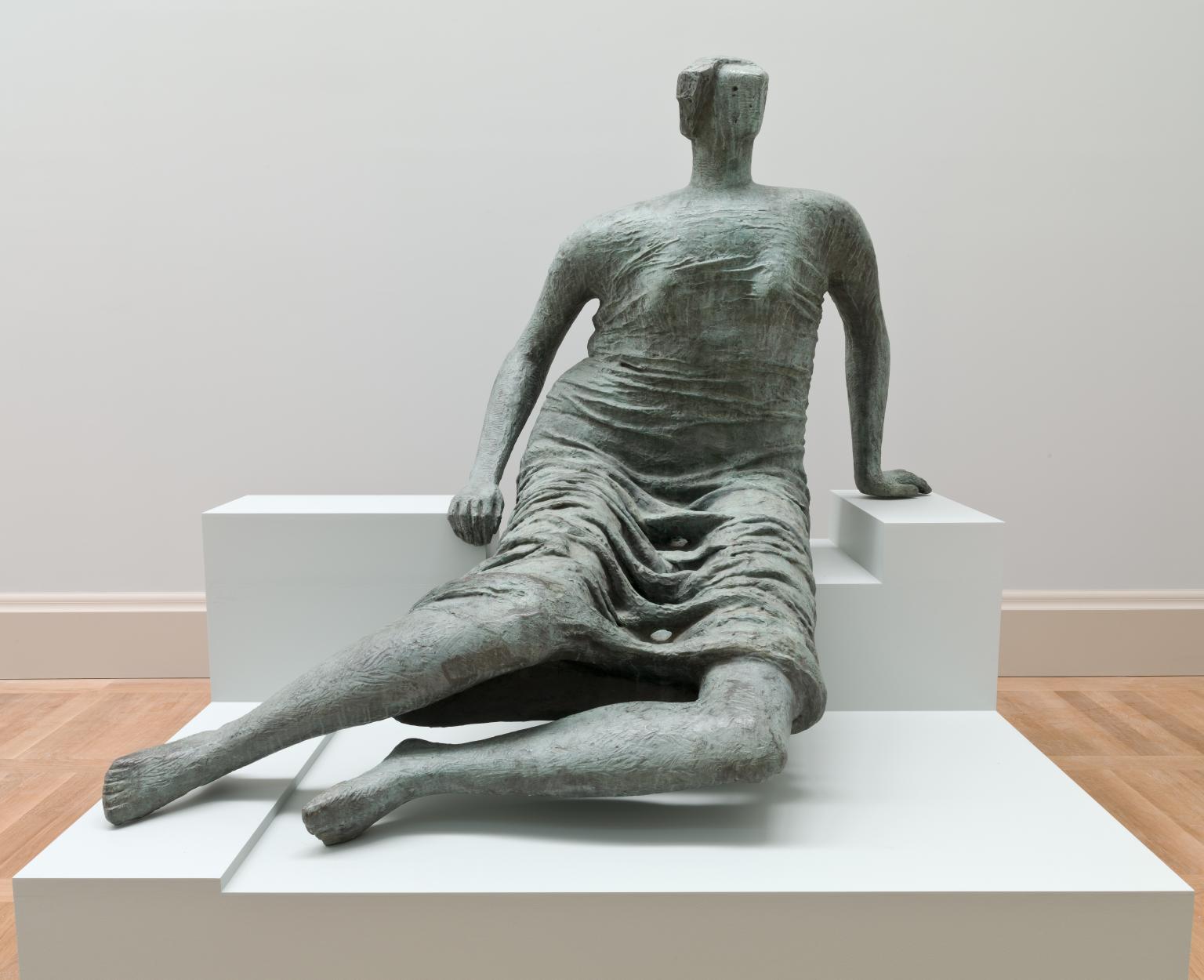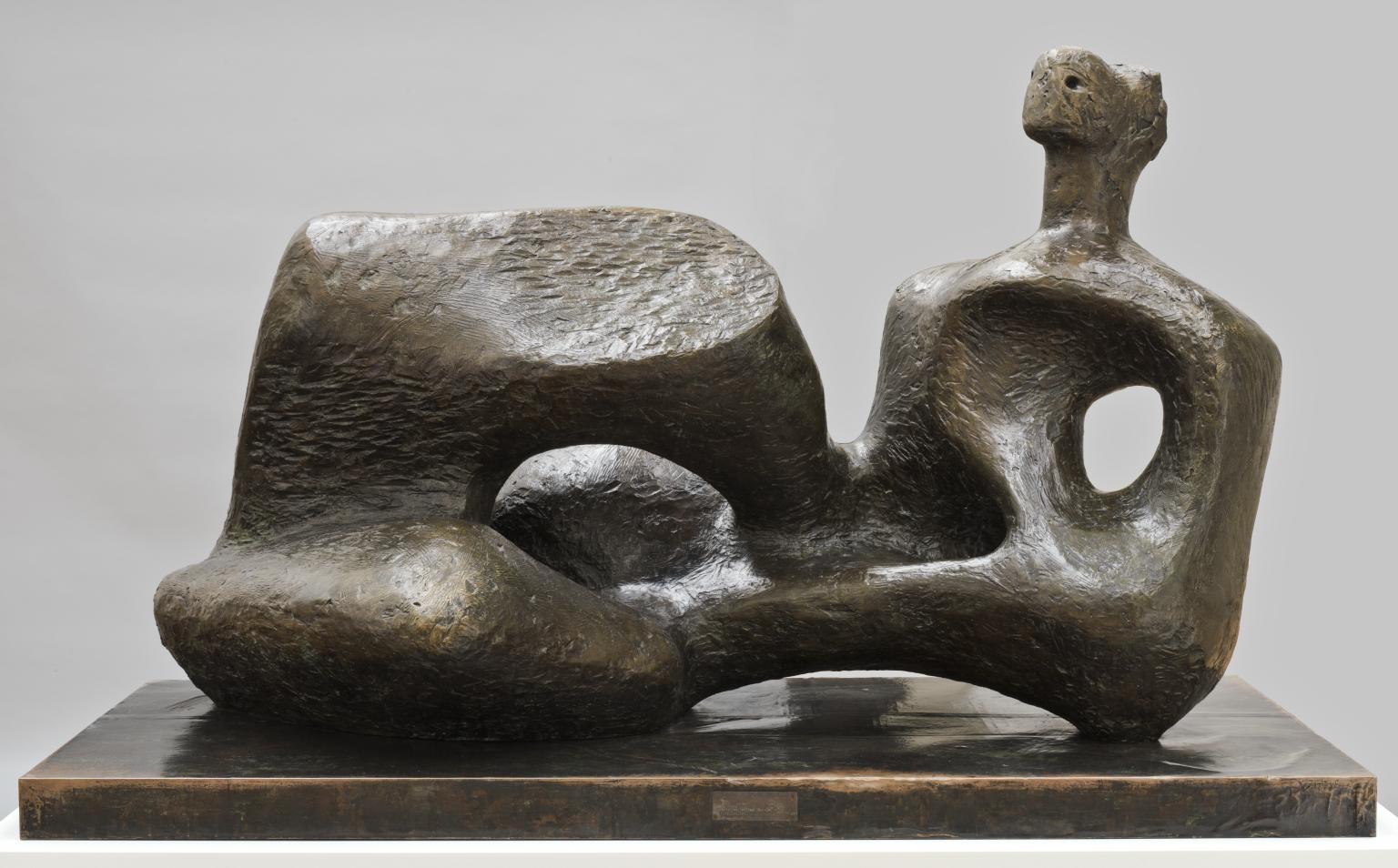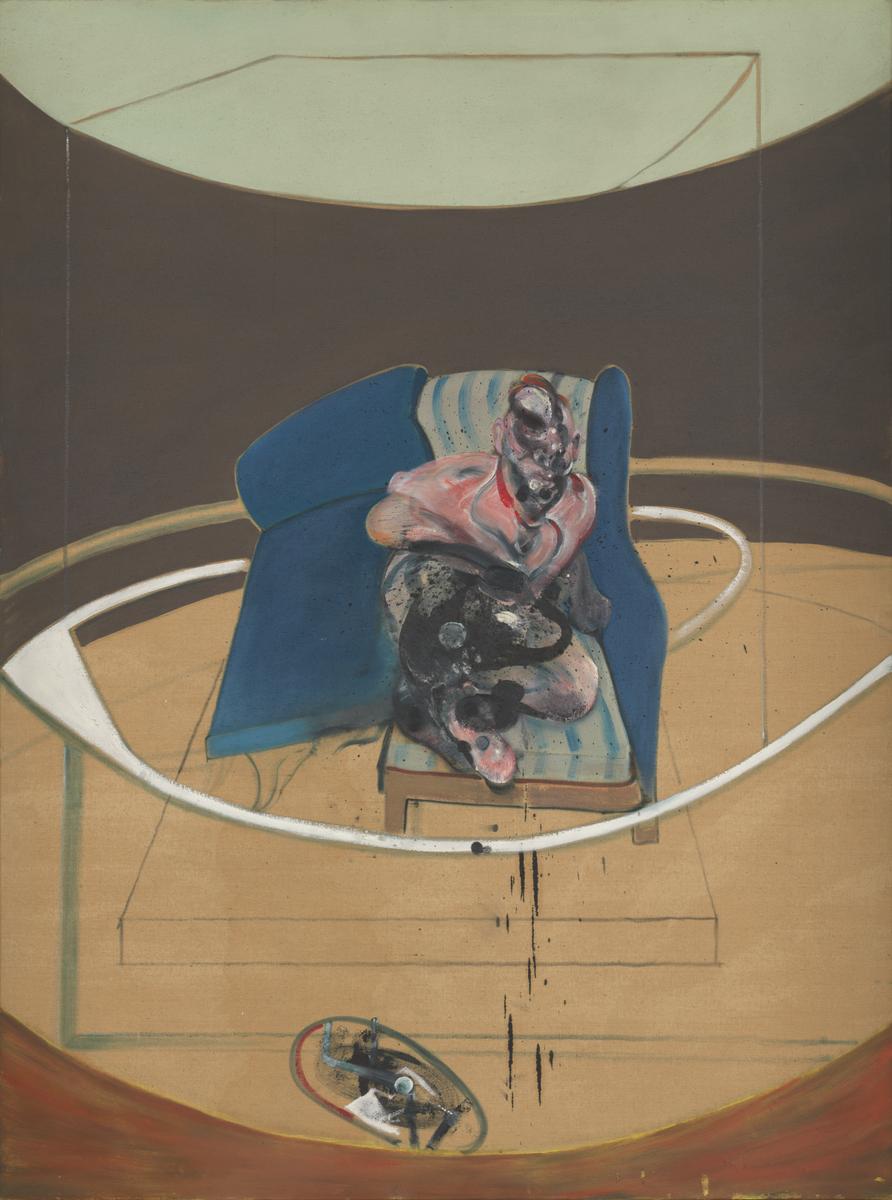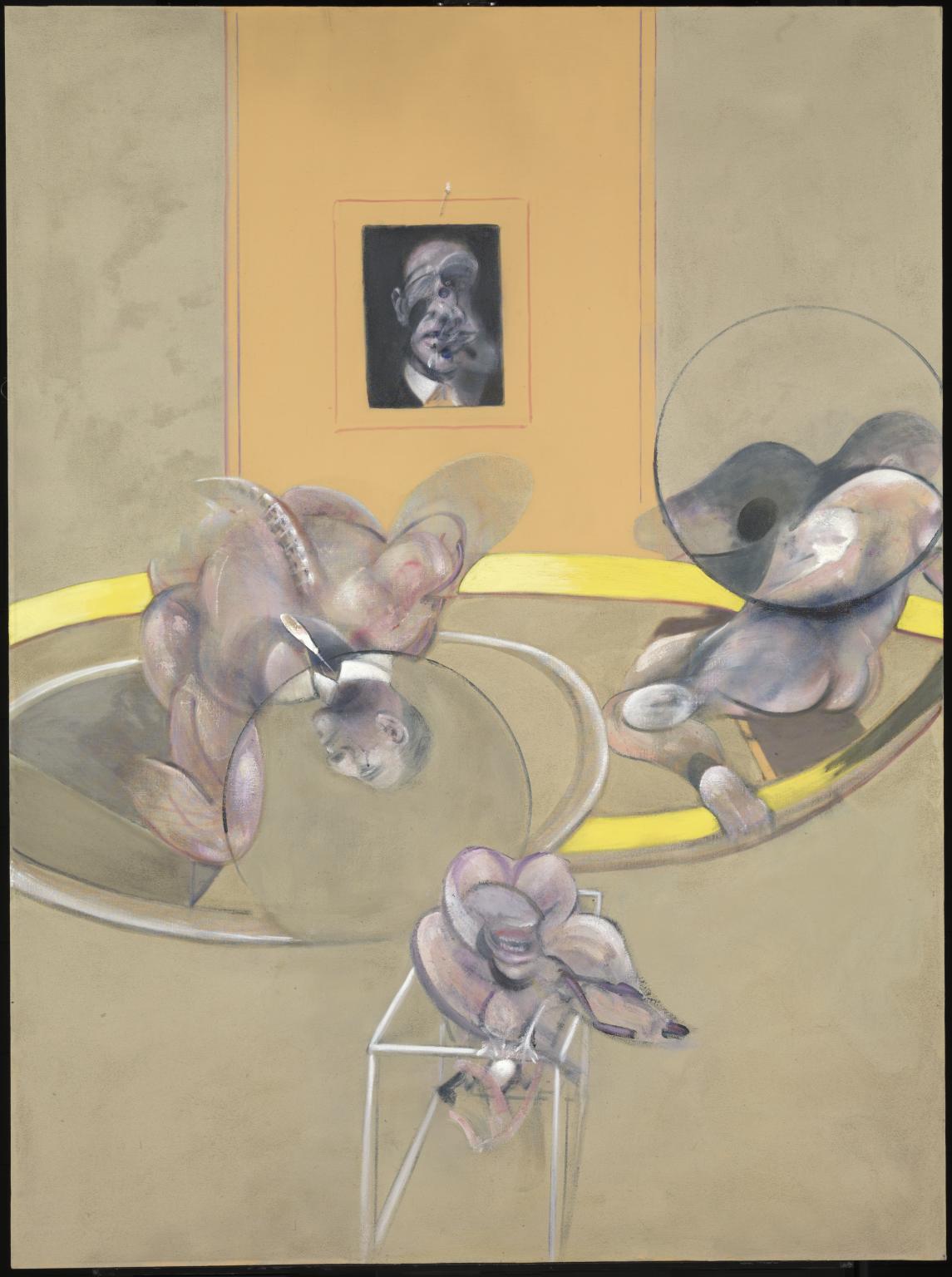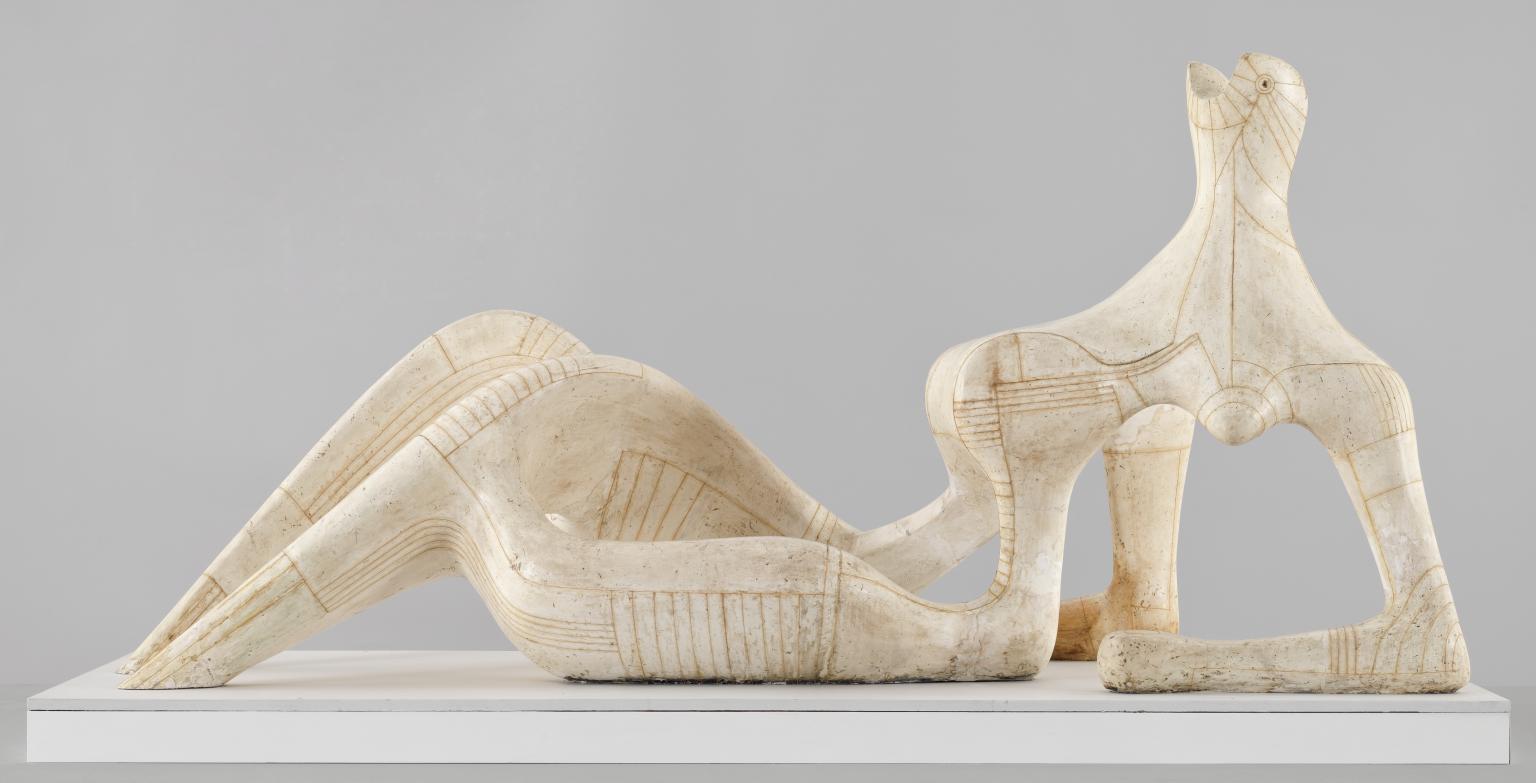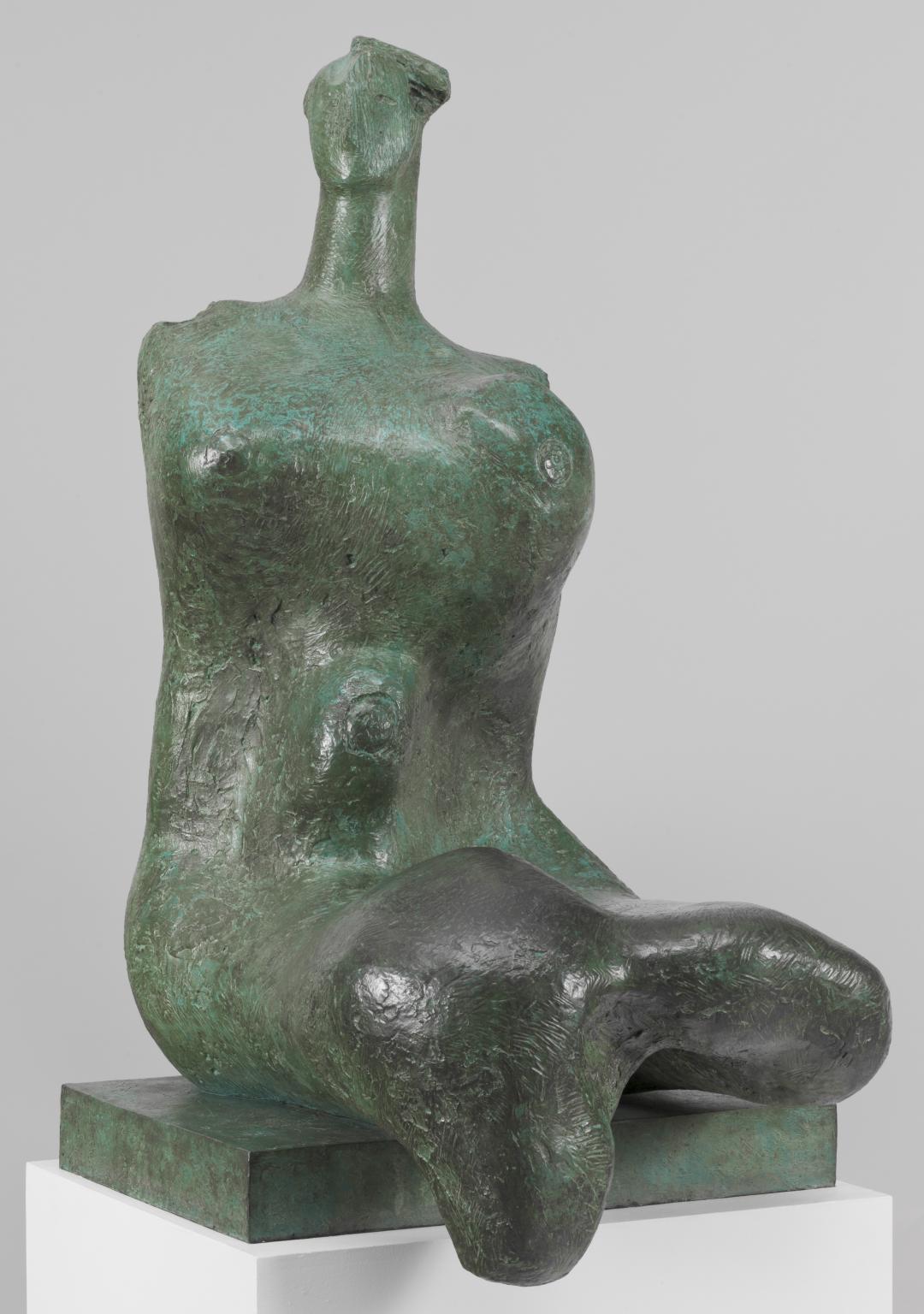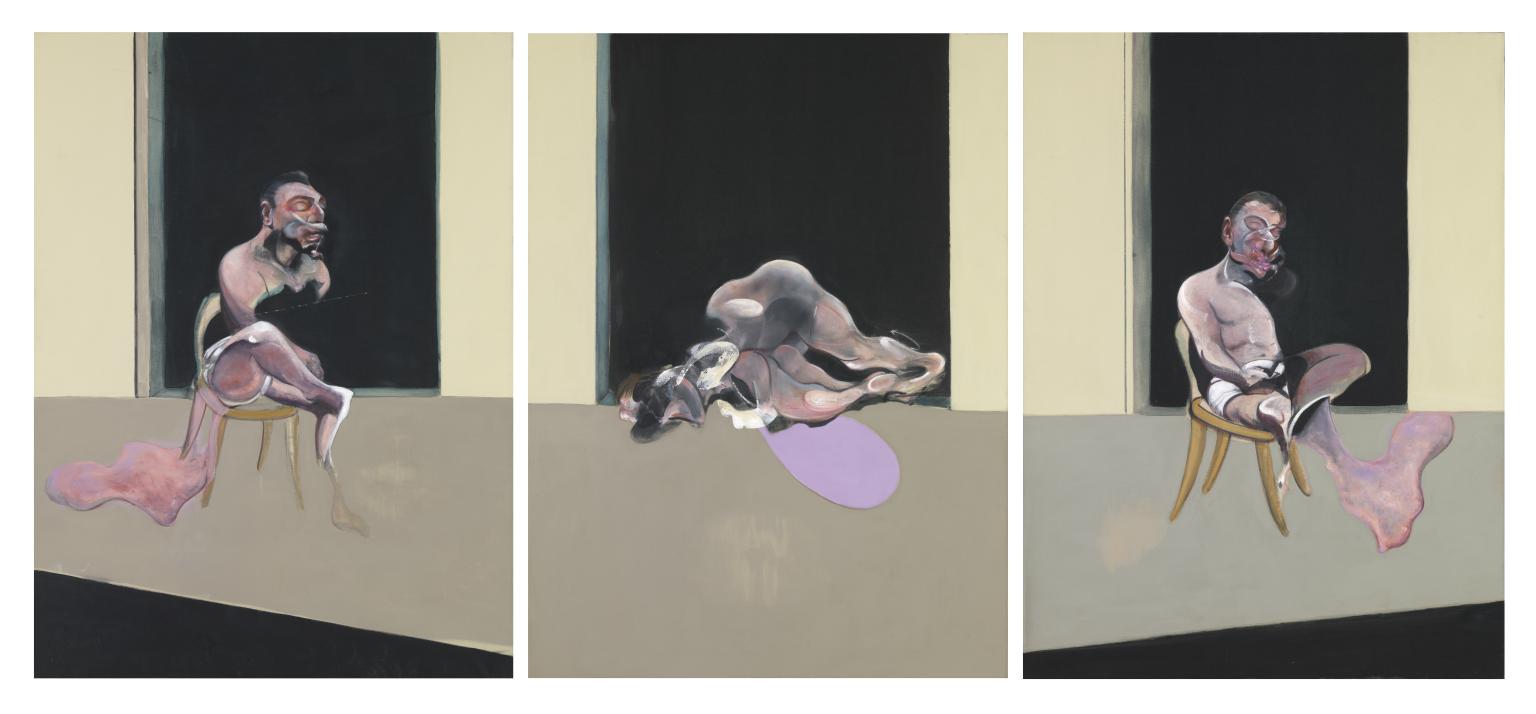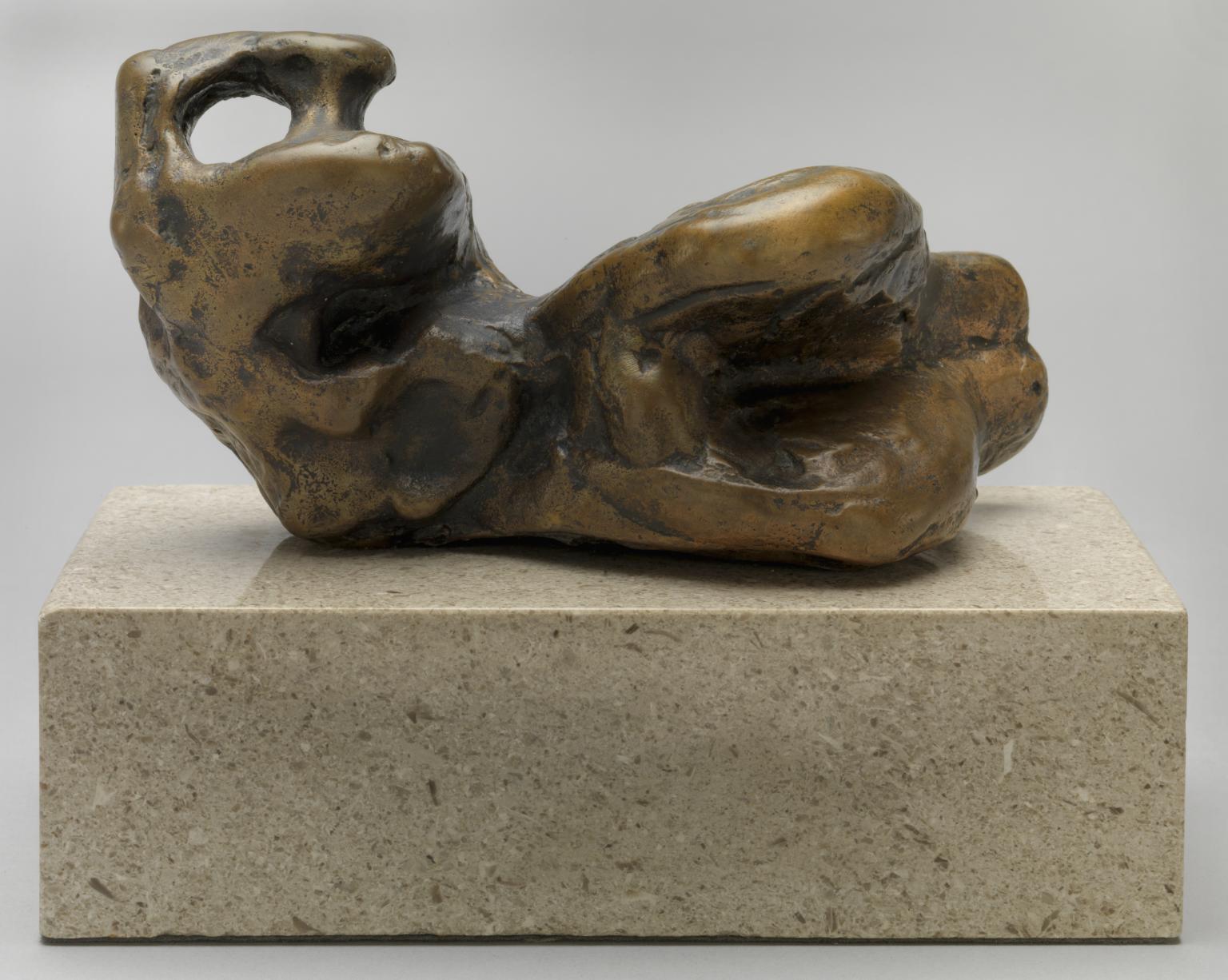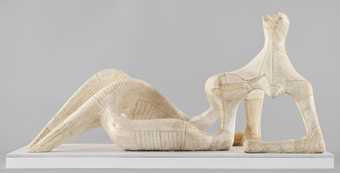14 rooms in Modern and Contemporary British Art
Bacon and Moore’s dynamic figures explore the relationship between form and space
This display sets up a dialogue, and confrontation, between two of Britain’s best-known twentieth-century artists. Working in the aftermath of the Second World War, Moore and Bacon turned to the body to explore the human condition, reinventing traditional materials and techniques for a new age. Their approaches were radically different. Bacon’s figures possess a restless, violent energy, often hemmed in by the sparse interiors they occupy. Moore’s sculptures expand comfortably into their surroundings, reflecting his wish that bodies be ‘so naturally fused that they are one’ with the space they sit in. Yet together their works reveal a shared vocabulary of curved postures and manipulated limbs. Their imagined forms explore the interplay between the body and its surrounding space.
Thanks to newer forms of media, Bacon and Moore’s work reached a wide audience. They were the subject of nationally-broadcast television shows, and weekend newspaper supplements featured images of the artists alongside their work, often printed in colour. These insights into their lives and artistic processes provided new ways to engage with their works.
Both Bacon and Moore embraced the relationship between their audiences and their art, actively considering the way their works would be viewed. Bacon framed his paintings with reflective glass. As we look at his canvases through these frames our reflections merge with the figures in his compositions. Moore created his monumental works for the outdoors, designing them so we could move freely around them. In this display, we encourage you to move around the works. As you encounter them from different angles, we hope you will discover relationships between Bacon’s paintings, Moore’s sculptures and your own body.
Art in this room
